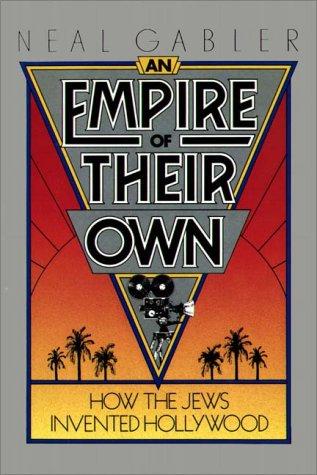Does your life add up to something whole, something coherent, something that appears to make sense of the bits of pieces of wide-ranging experience?
That’s the wonder and value of reading well-written biographies and autobiographies: it’s not just the “story” that counts, but the themes, the decision-points and how the pieces fit together so that the whole, literally, becomes greater than the “sum of its individual parts”.
My favourite biography still is Neal Gabler’s An Empire of Their Own: How the Jews Invented Hollywood (Crown, 1988). It’s effectively a group autobiography about five early “Hollywood Jews”: Carl Laemmle (founder of Universal Pictures), Adoph Zukor (Paramount Pictures), William Fox (Fox Film Corporation, and what we now know as 20th Century Fox), Louis B. Mayer (Metro-Goldwyn-Mayer) and Benjamin Warner (Warner Brothers). In his book, Gabler draws common themes from the stories of these five (and a bunch of other similar) men: Eastern European Jewish origins; an “utter and absolute rejection of their pasts and their equally absolute devotion to their new country”, to assimilate and become “Americans”; a “patrimony of failure” (poor father figures, and in some cases virtually absent); and a freak coincidence of timing. The timing was propitious: the movie industry was a new one, and the old money, the Anglo money found it distasteful. Thus, the Jewish entrepreneurs of the early 20th century had their way clear to enter it – unlike so many other industries and professions at the time.
The matter of timing and professional success has been explored at great length by Malcolm Gladwell (one of my favourite authors) in his book Outliers: The Story of Success (2009). As I wrote in my review at the time, he “attempts to deconstruct the essential prerequisites for extreme success – people like Bill Gates and the Beatles. According to Gladwell, Bill Gates benefitted greatly from the time and the place that he grew up: those elements plus hard work and brilliance added up to his becoming one of the most successful (and richest) businessmen of all time.
So it is the same with the new generation of digital entrepreneurs, of which Mark Zuckerberg is only one of the most famous. In the October 21st 2013 issue of The New Yorker, journalist D.T. Max (who also wrote the biography Every Love Story is a Ghost Story: The Life of David Foster Wallace) penned an insightful article about Jack Dorsey – one of the founders of Twitter (note that the full article is available on The New Yorker website from a link earlier in this sentence). I had never heard of Dorsey, but Max’s article brings it all together; he interweaves the strands and the themes of Dorsey’s disparate life that somehow add up to explain not only how Dorsey figured out Twitter, but why. (I recently wrote a blog post about Nathan Heller and San Francisco’s tech culture. The New Yorker has a 22’ Soundcloud podcast discussion between Heller and Max about this very topic.)
Biography, however, can be dull and seriously boring, so be warned. For the record, here are seven biographies that are currently on my “to read” list (in no particular order):
– Roger Ebert, Life Itself: A Memoir (2011) – More than a film reviewer’s autobiography.
– Brian Kellow, Pauline Kael: A Life in the Dark (2011) – About the great film critic who influences all of us critics in ways we cannot explain.
– David Maraniss, Barack Obama: The Making of the Man (2012) – My fascination with Obama never flags.
– Scott Anderson, The Man Who Tried to Save the World: The Dangerous Life & Mysterious Disappearance of Fred Cuny (1999) – I met and be-friended Fred Cuny in Israel in the 1970s, and followed his career until his untimely disappearance (and likely death) in Chechnya in 1995. (Read an except here.)
– James Salter, Burning the Days: Recollection (1997) – I discovered this amazing writer relatively late in my life and am still wondering why it took so long.
– Clare Cooper Marcus, Iona Dreaming: The Healing Power of Place – A Memoir (2010) – Clare Cooper Marcus was one of my life mentors; I studied a number of courses with her while doing my masters degree in planning at the University of California at Berkeley (where she taught landscape architecture). In so many uncountable ways, meeting Clare has influenced my life.
– Michael Medved, Right Turns: From Liberal Activist to Conservative Champion in 35 Unconventional Lessons (2004) – Medved and I do not share the same political convictions, but when I read his comments on the film The Passion of the Christ (he was a fan of Mel Gibson) during the researching of my PhD thesis, his incongruities and depth of intellect fascinated me.
(Book cover of Gabler’s An Empire of Their Own below:)




 Posted by donperlgut
Posted by donperlgut 






